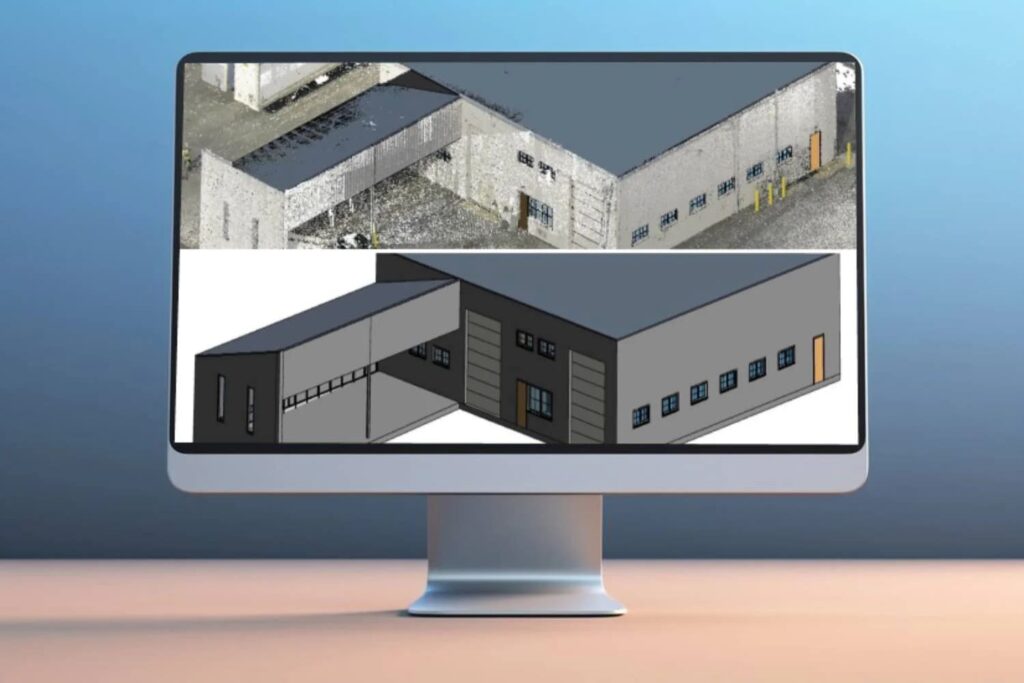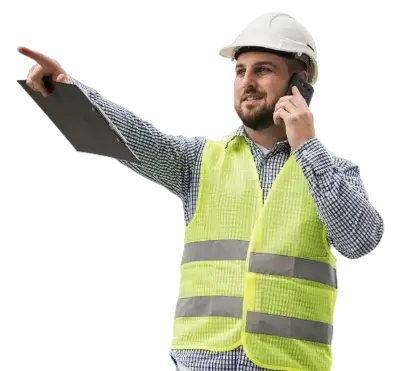Fast Point Cloud to 3D Model Transformation

In today’s fast-paced construction industry, the need for accurate and quick point cloud to 3D model transformation has become crucial for project stakeholders striving to achieve their goals and maintain design precision.
Custom point cloud to 3D model solutions are now indispensable tools for engineers, real estate developers, surveyors, and architects. Point Cloud to 3D Model solutions not only enhance historical preservation and renovation efforts but also significantly improve facilities management.
In this blog post, we will explore the various aspects of Point Cloud to 3D Model Conversion services. We’ll delve into the process of fast point cloud to 3D model transformation, examine point cloud to 3d model accuracy improvement techniques, and discuss how these advancements can benefit your projects.
Discover how using these services can lead to more efficient project outcomes, better preservation practices, and more effective management of your facilities.
What are Point Cloud to 3D Model Conversion Services
In the realm of Architecture, Engineering, and Construction (AEC), the transition from point cloud data to detailed 3D models is revolutionizing how projects are designed, managed, and executed. But what exactly are point cloud to 3D model conversion services, and why are they so crucial for AEC professionals?
Point cloud to 3D model conversion services involve transforming raw point cloud data—captured through laser scanning or photogrammetry – into highly detailed and accurate 3D models. This process begins with collecting vast amounts of data from a physical site, which is then converted into a digital format.
The result is a 3D model that reflects the precise geometry of the existing conditions, enabling professionals to visualize and interact with their projects in a virtual environment.
- For AEC professionals in the USA, UK and Europe, Point cloud to 3d models for engineers allow for a high level of precision in designing and planning, which is essential for managing complex projects and avoiding costly errors. Whether you’re working on a renovation, historical preservation, or new construction, having a detailed 3D model means you can make informed decisions, streamline workflows, and enhance collaboration.
- Point cloud to 3D model conversion not only improves accuracy but also saves time and resources. By working with accurate models, teams can foresee potential issues and make adjustments before physical work begins, leading to smoother project execution and better overall outcomes. Embracing these services means staying ahead in a competitive industry, where precision and efficiency are key to success.
How to Ensure Quick Point Cloud to 3D Model Transformation
For AEC professionals, expediting the transformation from point cloud data to detailed 3D models can significantly boost project efficiency and accuracy. They often require 3D BIM Models for a variety of different applications and purposes.
It often gets challenging for AEC companies in USA to develop quality and comprehensive 3d models within the expected timeline. Here’s a comprehensive step-by-step guide to ensure a swift and effective conversion process:
1. Plan and Prepare
Begin by clearly defining the objectives and requirements for your detailed point cloud to 3D model conversion. Identify the level of detail required and the specific areas of interest within the project.
Effective planning not only streamlines the process but also minimizes the likelihood of costly revisions later on.
2. Use High-Quality Point Cloud Data
Ensure that the point cloud data collected is of the highest quality. This involves using precise laser scanners or advanced photogrammetry techniques to capture detailed and accurate data. High-quality data is crucial for creating accurate models quickly and efficiently.
3. Choose the Right Software
Select advanced software tools for point cloud processing and 3D modeling. Tools such as Autodesk Revit, Autodesk Navisworks, and Leica Cyclone are known for their robust capabilities in handling and converting point cloud data efficiently. Make sure your team is proficient in using these tools to fully leverage their potential.
4. Implement Efficient Workflows
Adopt streamlined workflows and processes for managing data and creating models. Utilize automation features available in modern software to reduce manual tasks and expedite the point cloud to 3d model conversion process.
For instance, batch processing and template-based workflows can significantly speed up model creation.
5. Collaborate and Communicate
Foster open communication with all project stakeholders. Effective collaboration helps in quickly addressing potential issues and ensures that everyone involved is aligned with the project goals, leading to a smoother point cloud to 3D Model for BIM integration.
6. Consider Outsourcing
For projects with tight deadlines or limited in-house expertise, outsourcing point cloud to 3D model conversion can be a viable option.
Partnering with specialized service providers can accelerate the conversion process, ensuring high-quality results without stretching internal resources.
Also Read, Revit Point Cloud Modeling: A Step-by-Step Guide for Precise Conversions
Point cloud to 3D Model Accuracy Improvement Techniques
1. Start with High-Quality Data Collection
The accuracy of your 3D model heavily depends on the quality of the point cloud data you collect. Use advanced laser scanners or high-resolution photogrammetry techniques to capture comprehensive and precise data.
Ensure that your scanning equipment is calibrated correctly and that you cover the entire area thoroughly to avoid missing details.
2. Use Accurate Registration Methods
Proper registration of point cloud data is crucial for model accuracy. Utilize software tools that offer advanced registration techniques to align multiple scans precisely.
Techniques like Iterative Closest Point (ICP) and automated registration can help in merging scans seamlessly and reducing alignment errors.
3. Clean and Filter Data
Raw point cloud data often contains noise and irrelevant points that can affect model accuracy.
Clean and filter your data using specialized software tools to remove noise and outliers. This step ensures that only relevant and accurate data points are used in the modeling process.
4. Employ Advanced Modeling Techniques
When creating your 3D BIM model, use advanced modeling techniques to enhance accuracy. Tools such as Autodesk Revit or Leica Cyclone provide features for precise modeling and detailed adjustments.
Pay attention to aligning model features with point cloud data to ensure accuracy in dimensions and geometry.
5. Implement Quality Control Checks
Regularly perform quality control checks throughout the modeling process. Compare the converted Point Cloud to 3D model with the original Point Cloud data to identify and correct discrepancies.
Implementing checkpoints helps in maintaining high accuracy and catching issues before they become major problems.
6. Collaborate with Experts
Work with experienced BIM engineers and modelers who have a deep understanding of point cloud data and 3D modeling. Their expertise can help in applying best practices and advanced techniques to improve model accuracy.
Conclusion
In the dynamic construction industry, quickly transforming point cloud data into accurate 3D models is essential for meeting project goals and ensuring design precision.
As highlighted, this transformation process is invaluable for engineers, real estate developers, surveyors, and architects. Effective point cloud to 3D model solutions enhances design accuracy, historical preservation, and facilities management.
To streamline the conversion process, focus on key steps: detailed planning, using high-quality data, and choosing advanced software. Implementing efficient workflows, encouraging collaboration, and considering outsourcing, when necessary, can also optimize results for quick point cloud to 3d model transformation.
By adopting these strategies, you’ll boost project efficiency and accuracy, staying competitive in an industry where speed and precision are crucial. Leveraging these technologies not only simplifies project execution but also improves facility management, ensuring better outcomes and paving the way for future success.
Get in touch with Us
Follow Us

